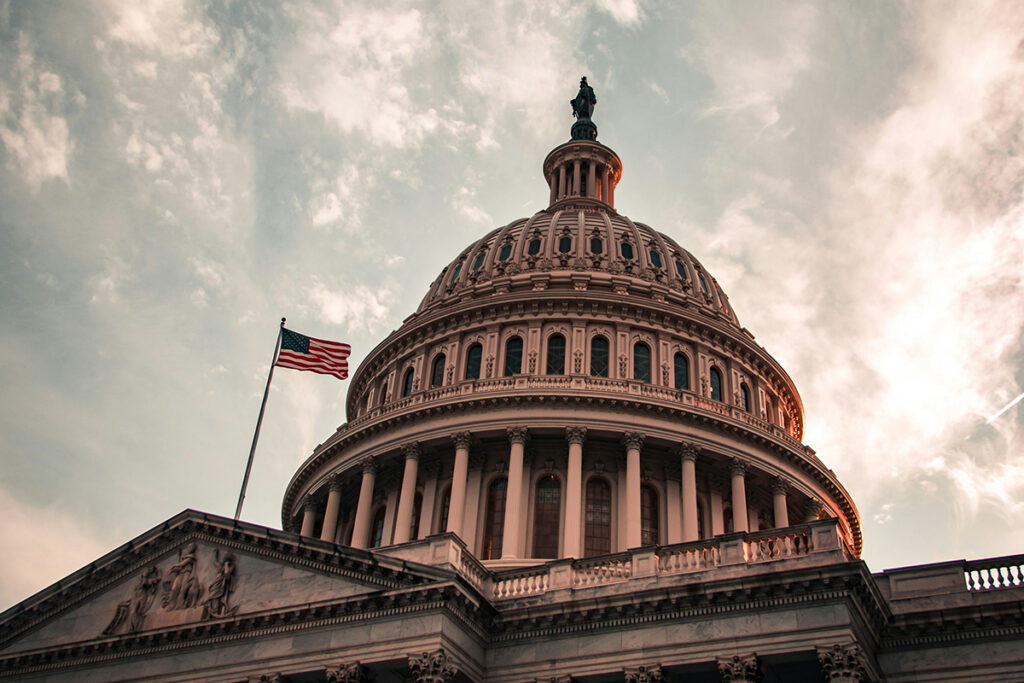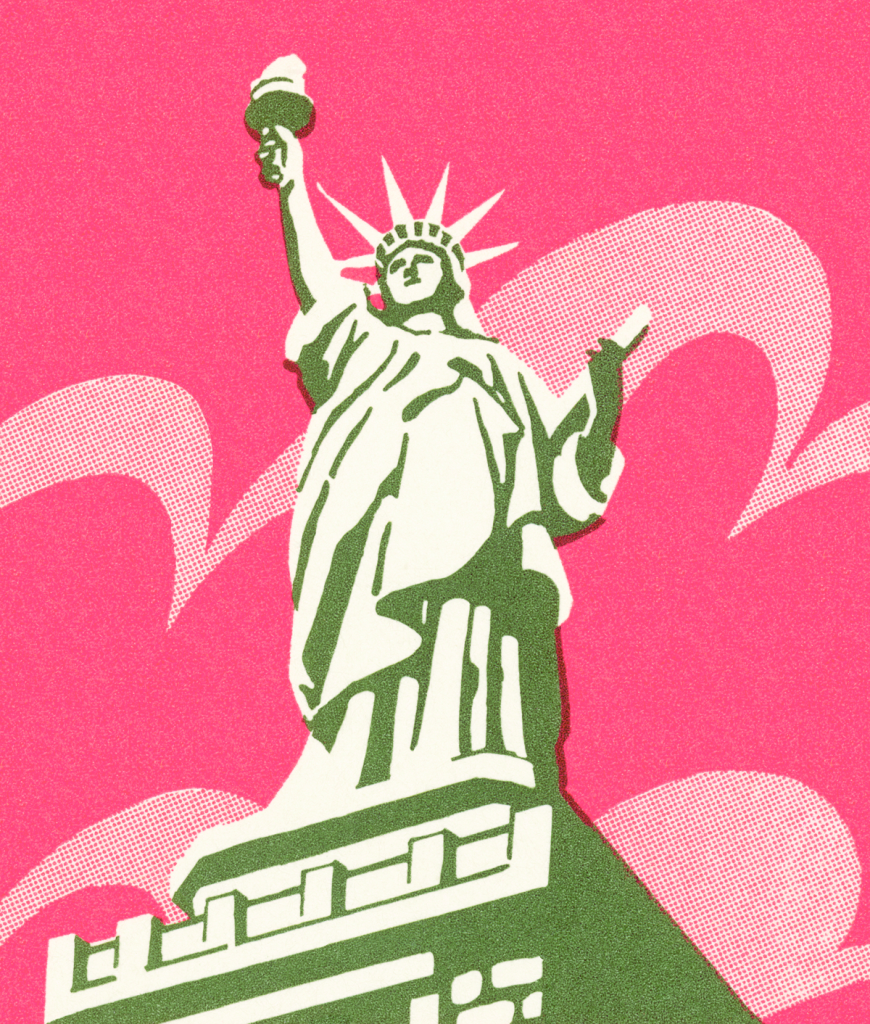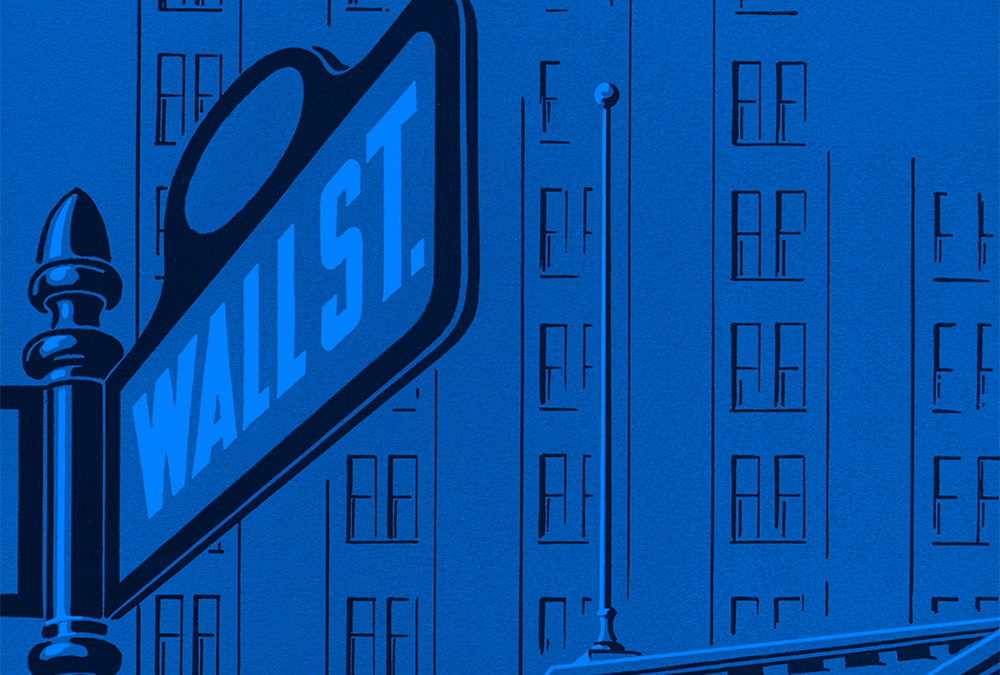The March jobs report was calm on the surface, but it is an unfulfilling bright spot in a new economic storm. The truth is this report won’t go down as the biggest jobs story this week. On Wednesday, President Trump issued a sweeping increase of tariffs, dubbed “Liberation Day,” that will bring the average U.S. tariff rate to the highest point in more than a century. It includes a 10% across the board tariff, affecting all foreign goods imports. The breadth of countries impacted, and the steepness of the rates, were higher than many analysts expected.
So, April 2, 2025, may go down as a “before and after” date in economic history. Thus, this March jobs report is the last reading of the U.S. labor market before this tsunami of trade changes takes effect. Stock markets have turned sharply negative since the announcement and recession worries are mounting.
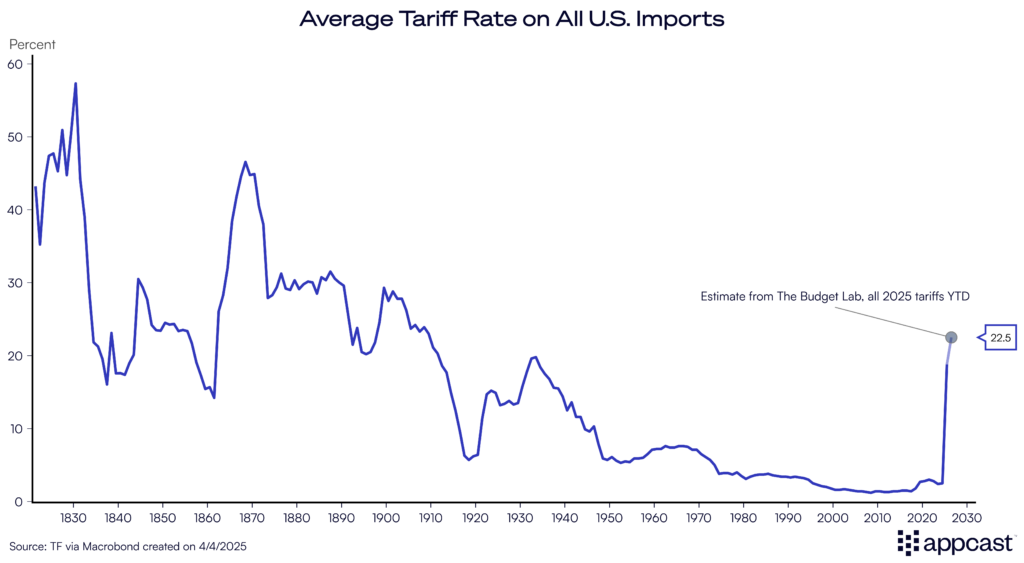
Inflation and inflation expectations are likely to rise significantly in the short term, complicating the Fed’s mission. Consumer spending and business investment are likely to fall. Not to sugarcoat it—GDP growth will almost certainly take a negative hit, and the labor market is likely to weaken.
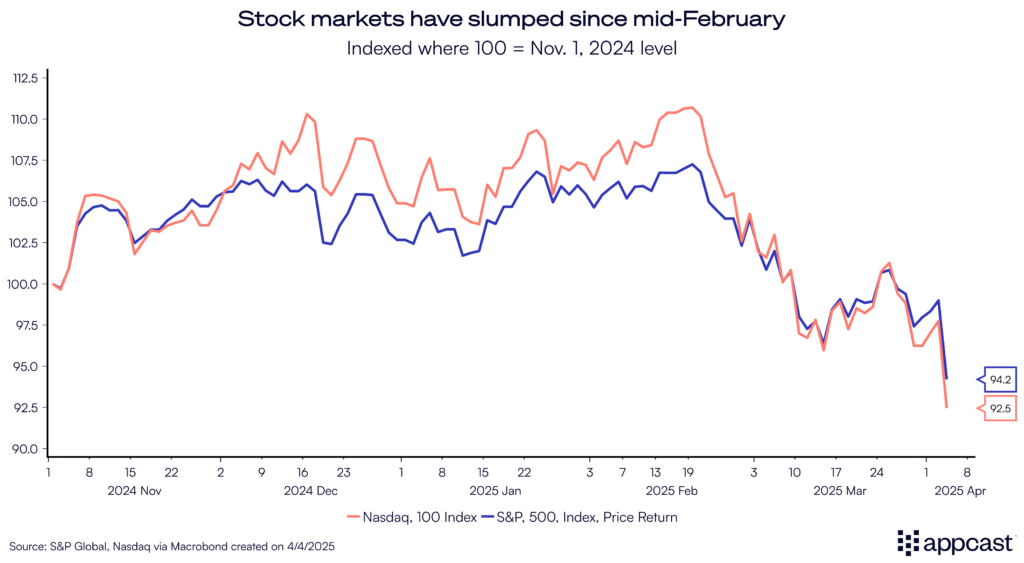
How bad could it get? It depends on what happens next—how severe the retaliation from other countries, whether country-by-country deals are reached with the Trump administration, and whether the administration relents in the face of blowback from the public and markets. Uncertainty is exceptionally high.
The calm:
The U.S. added 228,000 jobs in March, far more than the consensus economic forecast had expected. The unemployment rate ticked up slightly to 4.2%, but for mostly good reasons, as labor force participation expanded.
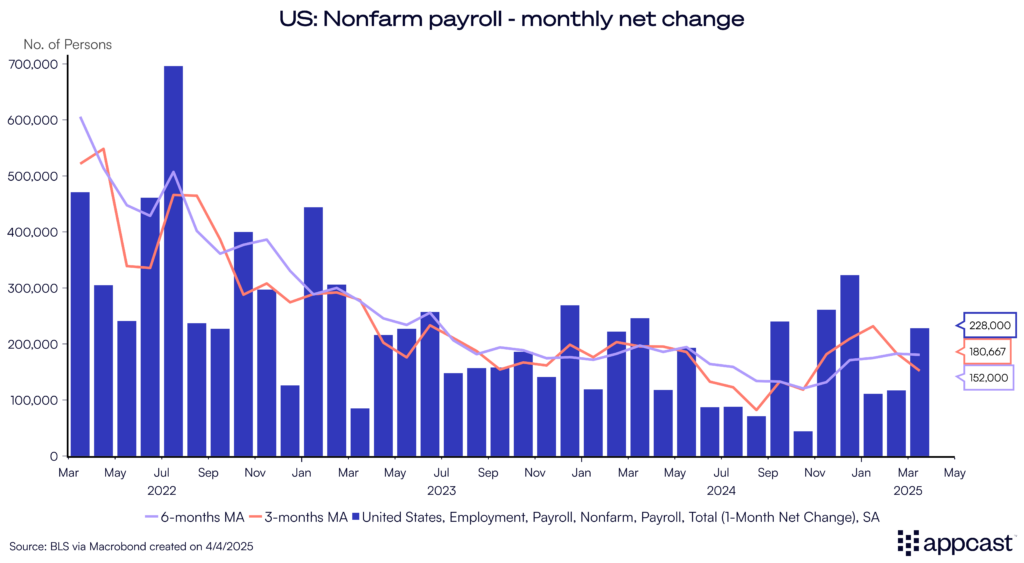
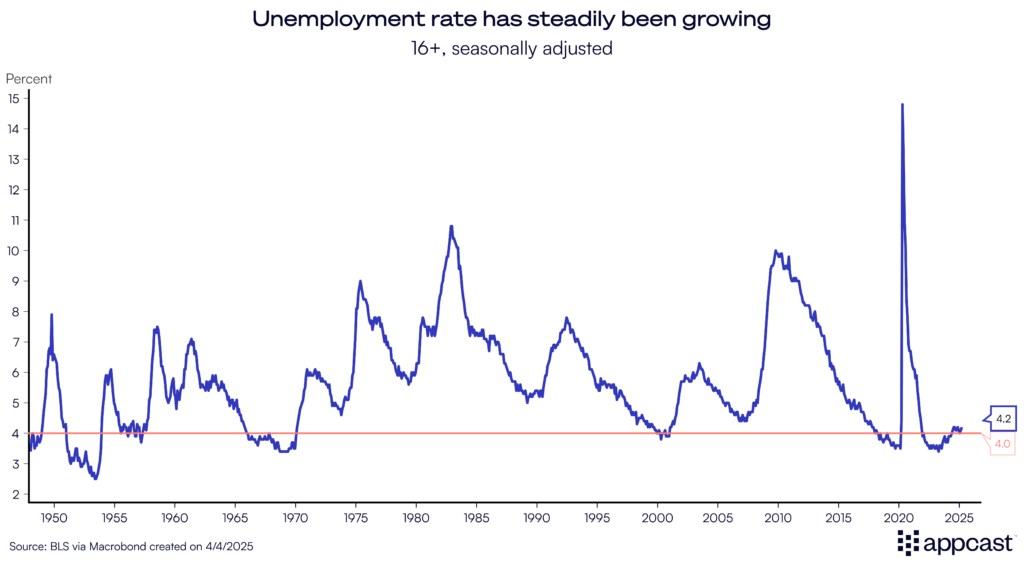
Nearly 40% of private employment gains were concentrated in education and health services. The bulk of that was in healthcare, which is effectively acyclical, or removed from the business cycle. Healthcare added 45,000 jobs per month on average in Q1.

Federal government employment fell by “only” 4,000 jobs, which is less than the 11,000 decline in January. However, this figure doesn’t include workers who took the “fork in the road” offer of a delayed severance (those reductions won’t appear until the October jobs report). With all the D.O.G.E.-related cuts ongoing, this number will likely get worse before it gets better.
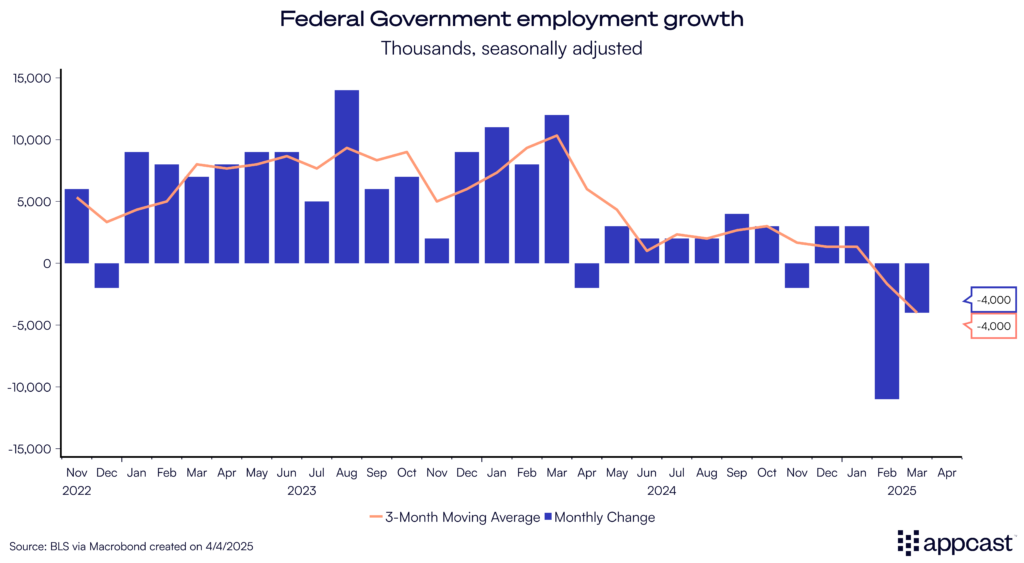
Other signs of relief appeared on the “intensive margin” (adjustments to labor short of hiring or layoffs, which are on the “extensive margin”). For example, hours worked, which had been declining in recent months, held firm in March. Economists feared that employers were cutting back on hours in anticipation of future job cuts. But the share of the labor force discouraged from looking for work or who wanted more hours declined, after a sharp rise in February.
Signs of the storm
The transportation and warehousing industry added nearly 23,000 jobs in March, the fifth month in a row of strong performance. Couriers and messengers—workers who deliver parcels across cities and states—alone added 15,800 new jobs in March. On the surface, this is great, but underneath it smells like a tariff effect. There has been a strong rush by wholesalers to import many foreign goods and distribute them before potential tariffs took effect (which is now, in April). Similarly, consumers have pulled forward their consumption of many durable goods like washing machines or video game consoles ahead of impending tariff news. This all could have provided a short-term boost to the transportation sector.
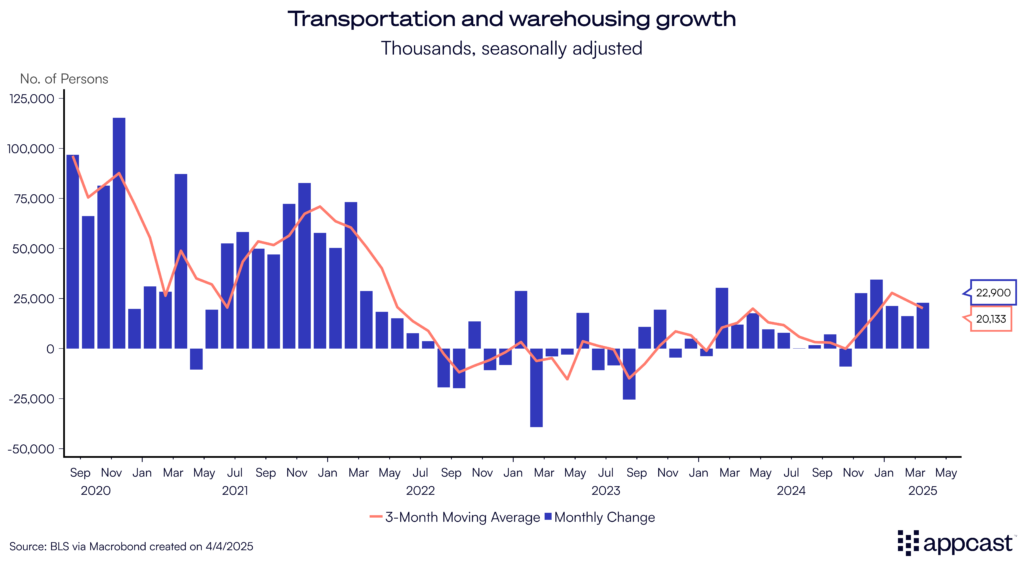
So, is this a good or ominous sign? Perhaps more the latter. We now have more clarity on the trade policy following “Liberation Day.” The average effective tariff rate is now above the level set by the infamous Smoot-Hawley tariffs in the 1930’s. April 2nd will go down as perhaps the single biggest change to global trade policy since President Nixon’s decision to move away from the gold standard as a basis of exchange rates more than fifty years ago.
What does this mean for recruitment?
Extraordinary economic uncertainty likely means a slowdown in hiring for industries directly tied to consumer and business demand. Thus, the impending fallout from retaliatory tariffs from our trading partners across Europe and Asia will radically shift employment growth across manufacturing, retail, and construction as consumer goods prices rise. There might be substantial job losses for retailers exposed to the Southeast Asia supply chain. Auto manufacturing could take a tumble, pending negotiations with Mexico and Canda (which were noticeably absent from the April 2nd tariffs).
It’s not a positive picture, but there are specific industries that are relatively immune. Healthcare is likely to chug along and keep adding jobs. Defense and aerospace employment could also rise; maybe energy and utilities as well. But the weakness in recent years for “white collar” jobs—professional and business services, information, finance and insurance—is likely to continue.
At Recruitonomics we will endeavor to remain calm in this highly uncertain market environment, even if there are choppy waters ahead. Recession odds are rising. Going into this week I would place my personal forecast for the 12-months out recession probability at 40%. But in the coming weeks, I would not be shocked to see it rise if the fallout from these tariffs escalates into a global trade war.


